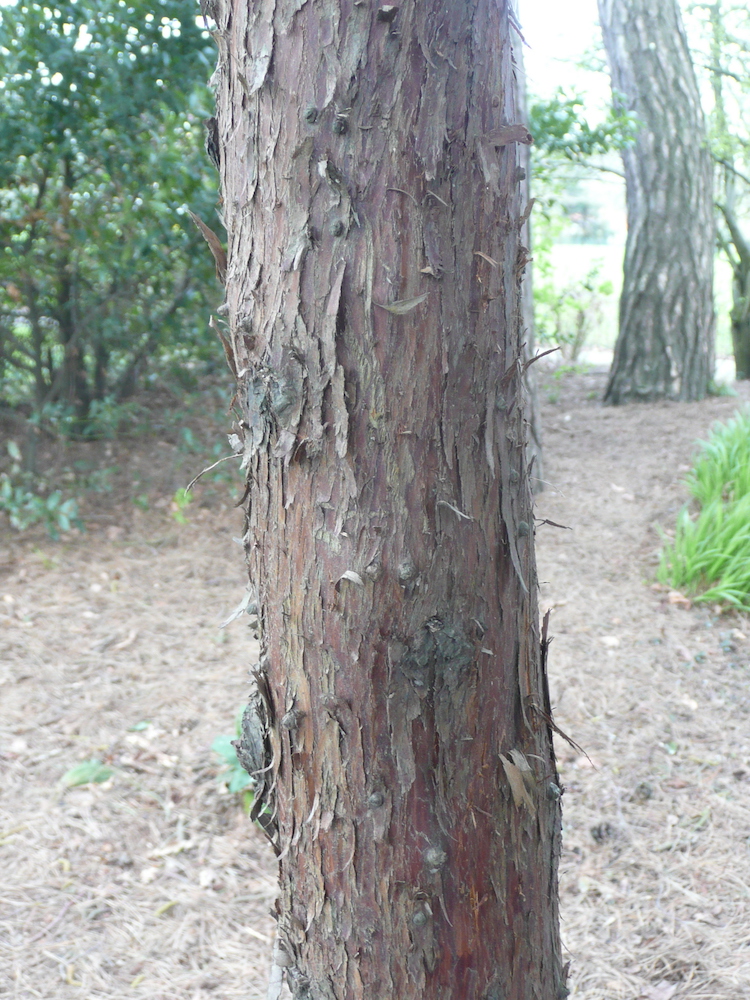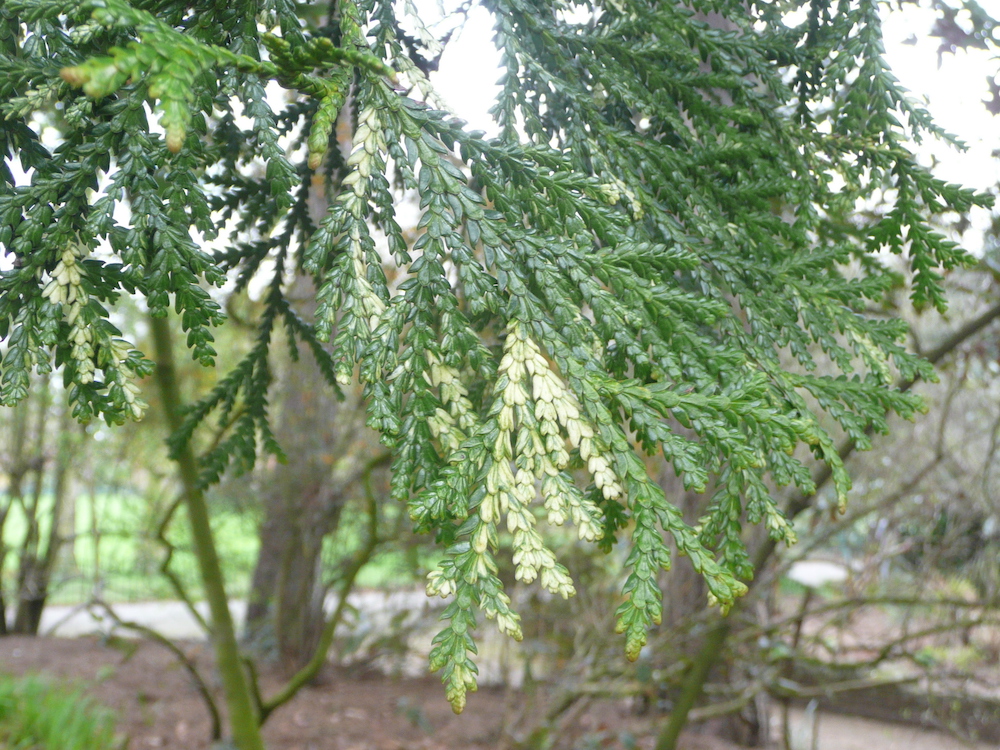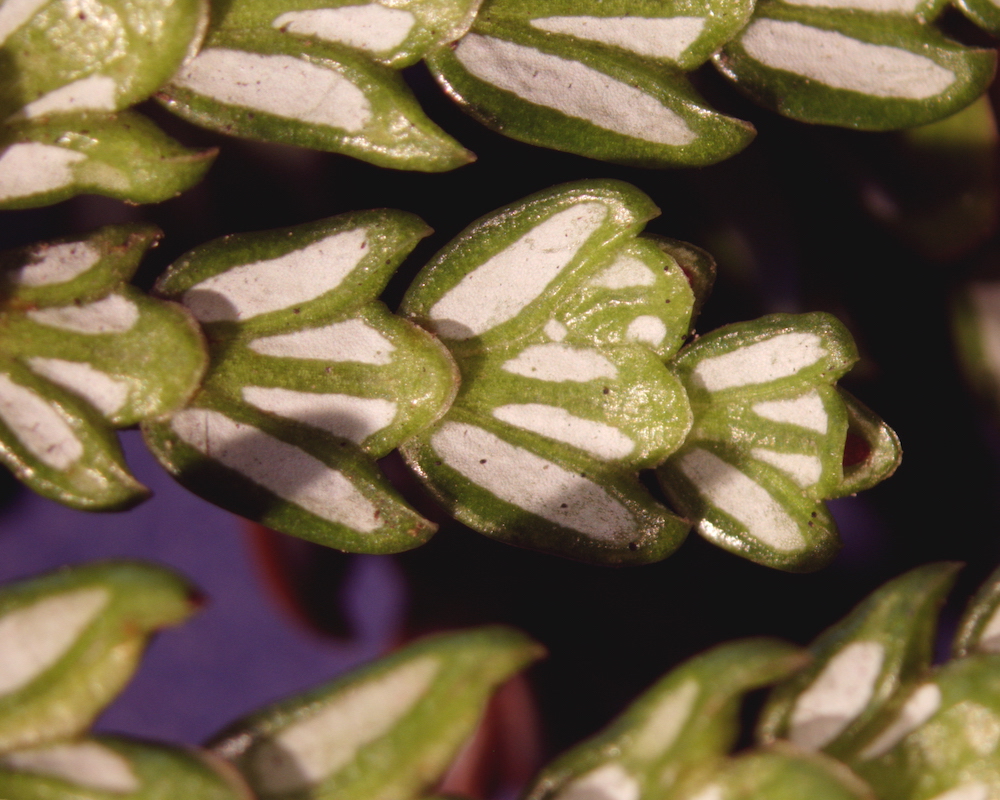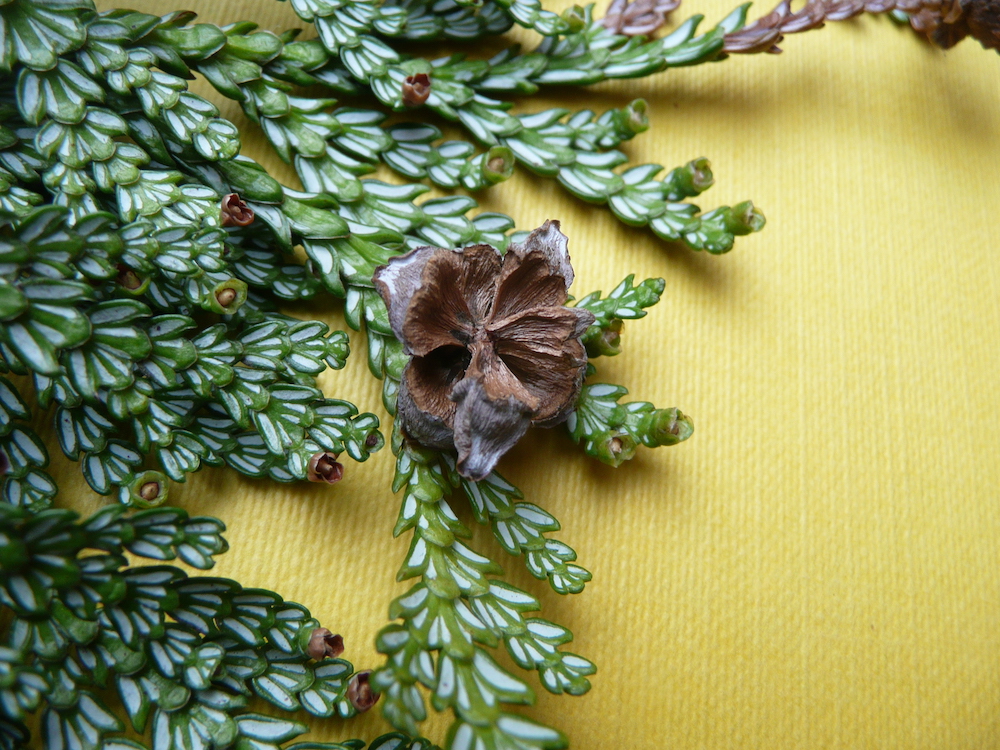Thujopsis dolabrata (L.f.) Siebold & Zuck.
(no common English name - sometimes called 'hiba')
The tree tag number relates to the black tree-maintenance tags, usually fixed on the trunk, 2 to 3m above ground level.
Thujopsis is a genus with a single species, with two varieties. It is endemic to Japan and was introduced to the West in 1853. It can make a large tree up to 40m. As the name suggests it is related to the Thujas, but has quite distinctive leaves with dramatic white markings on the underside (see photos below). In fact the combination of the very glossy green upper side of the leaf and the white marked underside give the foliage a distinctly plastic look. The cones are small but slightly larger than those of Thuja plicata. Thujopsis is seldom seen except in arboreta and large gardens. It does not tolerate draughts and is grown more widely in Ireland and western areas of the British Isles. The specimen in Belfast Botanic Gardens is a variegated form – Thujopsis dolabrata ‘Variegata’. This was introduced from Japan by Robert Fortune in 1860 (the same Fortune that brought 20,000 tea plants from China to the Darjeeling region of India).






Photos taken in Belfast Botanic Gardens in 2009. Copyright: Friends of Belfast Botanic Gardens.
